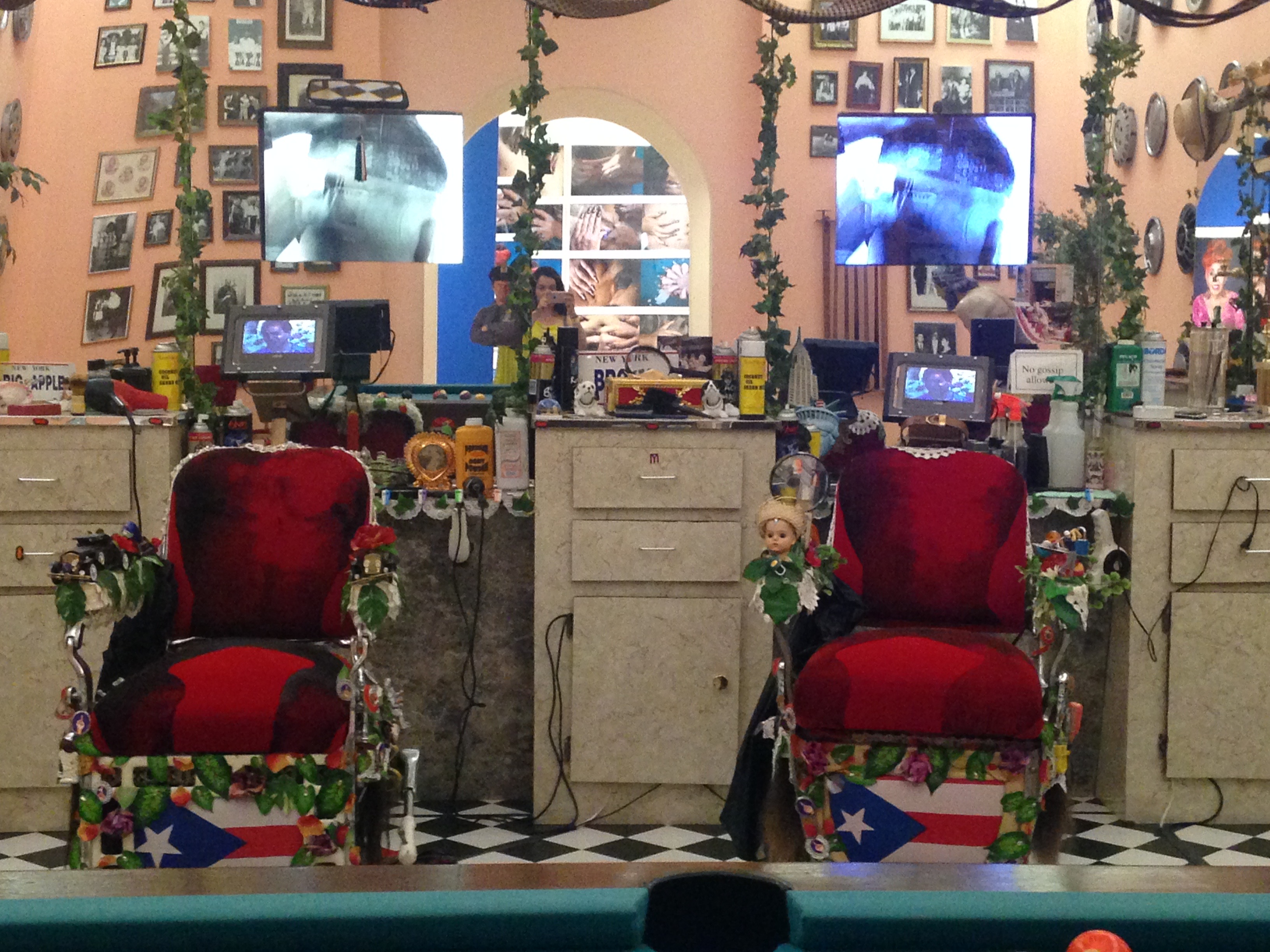Years ago, using flour sacks and old curtains, my grandmother stitched for me a quilt of soft yellows, pretty blues, bits of crimson, and light touches of burnt sienna—colorful patterns that filled my childhood. The quilt kept me warm in the winter as the final layer atop multiple others that I could pull over my head for extra warmth or a sense of protection. It kept me cool in the summer, light and short enough for my toes to peek out from the bottom. Moved from crib, to play tent, to high-school bus rides, my quilt went everywhere with me, a faithful witness to my growth. Now, the quilt is worn beyond use, but I incorporate the patterns that are etched in my memory and conjure feelings of comfort, into my art as a way to evoke meaningful aspects of my identity and experiences.
I grew up and now teach in New Mexico, serving Latino and Native American populations (Latinos include descendants of Mexican citizens who were living in the area when New Mexico became part of the United States after the Mexican-American War as well as recent immigrants from Mexico, Central America, and the Caribbean). These groups are not considered part of mainstream American culture and are widely underrepresented or misrepresented in popular culture and art institutions. I am interested in aesthetic strategies that help these students access themes of home, identity, and culture in ways that move away from stereotypes. Locating meaning in simple yet transformed everyday materials is one way to accomplish this.

Pepon Osorio’s En la barberia no se llora (No Crying Allowed in the Barbershop) at Museo de Arte de Puerto Rico. Photo: Jocelyn Salaz.
Discovering the writings of the Chicana scholar and artist Amalia Mesa-Bains gave me access to language that describes the aesthetic I share with my grandmother. Mesa-Bains situates Chicana artmaking within theories of aesthetic production, coining the term domesticana to describe a Chicana feminist sensibility rooted in the materials and spaces of the everyday; home, family, and working-class backgrounds are the meanings embedded in popular culture and practices. This aesthetic arises from the women’s tradition of the home altar, in which photographs, mementos, discards, fragments, recycled everyday materials, and handicrafts such as embroidery, crochet, and paper cuttings create sacred spaces in the home that record family history and spirituality. Making the most from the least, this domestic, non-White, female-based aesthetic serves as a counterpoint to the public, White, male-based aesthetic that has dominated the art world.1
Related to domesticana in terms of the use of everyday materials, Pepon Osorio’s work focuses on how manufactured objects convey identity. In 2011, I saw Osorio’s installation, Drowned in a Glass of Water, in the 516 Arts exhibition, Latino/a Imaginary, and spoke with him about the story of the family on which the piece is based. Because my work is personal in nature, I asked how he connects to a work based on other people’s lives and experiences. Without hesitation, he told me their narrative was made personal through his connection, comfort, and familiarity with the objects used in the piece. In conceptualizing his work, he asks, “What does this manufactured object that deals with my identity have to say to me? And what does it mean to me when I bring it home? Because I may be associating with it as an African American or as a Puerto Rican or Latino. So I have to turn it around so that it can really fit my home, my position, my environment, and so on.”2

Third grade student at Cuba Elementary created this home for her toy pet as part of the unit that focussed on home, using recycled materials.
Here are some ways this aesthetic—that utilizes and transforms everyday materials and popular-culture references to make meaning—can be employed in a classroom curriculum:
- After viewing the Art21 segment on El Anatsui, which shows how he transforms soda cans and bottle caps into ethereal, glittery wall hangings, students can explore how a simple piece of white paper can be changed to make different three-dimensional forms. This lesson, a playful exploration of paper sculpture, can lead to others: What wonders can we create from humble materials that we can easily access?
- During a lesson centered on the theme of home, students can watch Pepon Osorio’s Art21 segment on Home Visits. Next, they can create a shoebox home for a small toy, using objects from their homes and recycled materials donated by their community, in order to reflect on the practical and emotional functions of homes. Students are often very thoughtful about creating places for their toys to eat, sleep, and play, considering the needs and wants of their imaginary being with empathy. What they provide for their toys reveals aspects of their identities.
- For a sculpture project, students can collect cardboard boxes from home to bring to school. These boxes, the containers of manufactured items that moved from store shelves into the home lives of children, reflect what students and their families consume. In a unit that incorporates imagination, painting, and embellishment, the boxes can be used to create sculptures. The fundamental questions are: If we don’t have traditional art supplies, what materials from everyday life can we use to create? How does what we use and buy affect what we can make?
By incorporating personal experiences and transforming materials that are accessible from their homes, students can explore concepts of home, identity, and culture in ways that surpass stereotypes from the mainstream.
1. A. Mesa-Bains, “Domesticana: The Sensibility of Chicana Rasquachismo,” in Chicana Feminisms: A Critical Reader, edited by G. A. Arredondo, A. Hurtado, N. Klahn, O. Nájera-Ramírez, and P. Zavella, pp. 298–315 (Durham, NC: Duke University Press, 2003).
2. J. Gonzalez, Subject to Display: Reframing Race in Contemporary Installation Art (Cambridge, MA: MIT Press, 2008).




